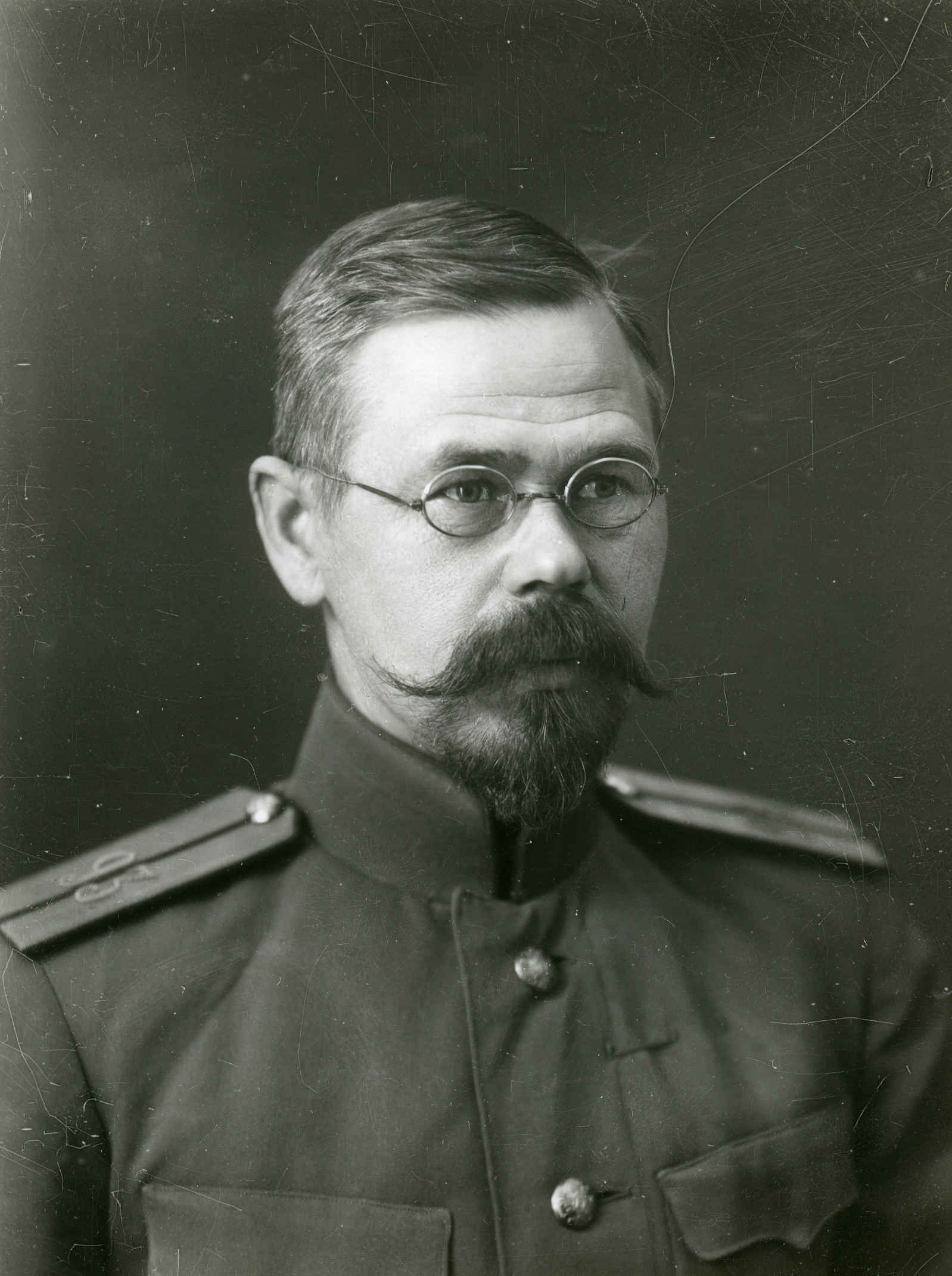
Ansomardi
Ansomardi (Peäro August Pitka, 1866–1915) was an Estonian children’s writer who established the classical tradition of Estonian children’s literature in the early 20th century with his ghost stories based on folklore.
He was born to a farmer’s family in Jalgsemaa village, Järva-Jaani parish, Järva county. In 1887, he graduated Alexander Gymnasium in Tallinn. He voluntarily joined the Irkutsk regiment in Finland the same year. In 1891, he graduated the military school in Petsersburg. He remained in the military and gradually climbed the ranks. In the Russo-Japanese War, he was in the officers’ reserve corps in Manchuria. His later service as an officer was mainly spent in Pskov. With his Russian wife, he relocated to Väike-Maarja parish, Kiltsi village, where the majority of his literary works were written. He fought in World War I as a part of the Russian czarist army and was promoted to lieutenant colonel for his service in battle. He probably fell in battle in Poland, near the Narew river. His pen name Ansomardi was the name of his father’s farm. His brother was Johan Pitka, a rear admiral made famous in the Estonian War of Independence.
Writing under the pen name Ansomardi, he began contributing to newspapers in 1897. In the beginning of the 20th century, his story collection Jalgsemaa Kitse-eide muinasjutud (‘Fairytales from the Jalgsemaa Goat Lady’, 1901) was published, in which the very old Goat Lady tells folktales and fairytales from his home village. His three long stories Jalgsemaa järv (‘Jalgsemaa Lake’), Surm suu ääres (‘Death is Nigh’) and Tondi-Tõnu (‘Tõnu of Ghosts’) offer detailed nature descriptions, funny episodes and mystical happenings in a world where there are also witches, ghosts, fairies and magical servants (kratt). Ansomardi may be considered the founder of the ghost story genre and to have developed further the literary fairytale genre that is widespread in Estonian children’s literature.
His fairytale-like singspiel Murueide tütar (‘The Daughter of Mother Sward’, 1900, music by M. Härma) also gained wider recognition. He gathered his army memories and stories that were published at the beginning of the century into the collections Elu-pudemed (‘Crumbs of Life’, 1909) and Sõja päivilt (‘From the Days of the War’, 1910). The collection Lastejutud (‘Children’s Stories’, 1911) contains coherent, sincere, humorous and fantasy-filled children’s stories. He published several plays as well, in addition to a physical exercise guide and a war dictionary. Most of his works were published in Estonian journals at the beginning of the 20th century, some of his writings remain as manuscripts.
A. O. (Translated by A. S.)
Books in Estonian
Stories
Jalgsemaa Kitse-eide muinasjutud. Jurjev: Hermann, 1901, 71 lk. [2. trükk: Tartu: Eesti Kirjanduse Selts, 1926, 83 lk.]
Kaks sündinud lugu. Tallinn: Eesti Postimees 1904, 64 lk.
Poolik elu. Tallinn: Eesti Postimees, 1904, 64 lk.
Elu-pudemed. Tartu: K. Sööt, 1909, 189 lk.
Sõja päivilt. Tartu: K. Sööt, 1910, 136 lk.
Lastejutud. Tartu: Postimees, 1911, 19 lk. [2. trükk: Tartu: Postimees, 1925, 22 lk.]
Jalgsemaa Kitse-eide muinasjutud ja teisi jutte. Tallinn: Eesti Raamat, 1979, 114 lk. [2. trükk: Tallinn: Eesti Raamat, 2008, 125 lk.]
Näidendid
Murieide tütar. Jurjev: Postimees, 1900, 67 lk. [2. trükk: Jurjev: Hermann, 1905, 67 lk.]
Matsil unes, teistel ilmsi. Jurjev: Hermann, 1901, 30 lk.
Muu looming
Võimlemise ehk Gümnastika õpetus. Jurjev: Postimees, 1904, 87 lk.
Sõjamehe sõnastik. Tallinn: G. Pihlakas, 1914, 32 lk.



